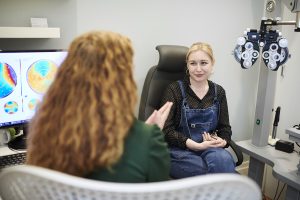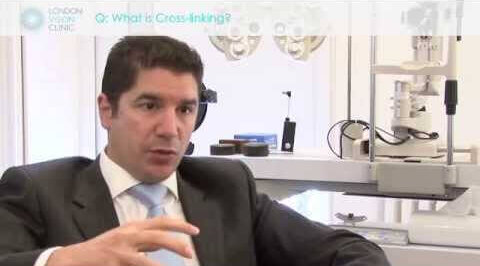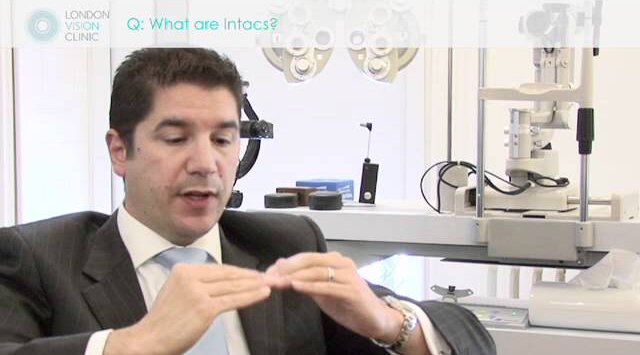Keratoconus Treatment: What is Cross-Linking?

If you or someone you know has been diagnosed with keratoconus, you may have also heard the term “cross-linking” being thrown around. But what is cross-linking treatment and how can it help with the symptoms and development of keratoconus?
What is Keratoconus?
Keratoconus is a genetic eye condition that affects the stromal layer of the cornea. Over time, this causes the cornea to become progressively thinner and eventually bulge out into a cone shape.
This change in shape affects the way light is refracted into the eye, essentially causing a severe form of astigmatism. As a result, patients with keratoconus often experience blurred or distorted vision and increased sensitivity to light that can worsen as the condition develops. These symptoms can make everyday tasks such as reading and driving increasingly difficult.
The cause of keratoconus is not fully understood, though it is believed to be genetic in some cases. The development of the condition may also be associated with eye allergies, excessive eye rubbing, and connective tissue disorders. Learn more about keratoconus and Laser Eye Surgery.
In the early stages of keratoconus, visual aids such as glasses and contact lenses are often sufficient to correct blurred vision associated with the condition; however, as symptoms worsen, further treatment is usually required.
Treatments for keratoconus
As the cornea becomes thinner and steeper in patients with keratoconus, glasses and soft contact lenses tend to become ineffective. In some cases, a cornea transplant may be considered, but this procedure is becoming increasingly uncommon as more effective alternatives become available.
Cross-Linking Treatment
Cross-linking is a proven, non-invasive procedure that involves the application of eye drops and ultraviolet (UV) light to make the tissues in the cornea stronger. It works by increasing bonds between collagen fibres in the eye, which act as anchors to help stabilise the cornea. These anchors can prevent the cornea from bulging out and becoming steep and irregular.
Custom-made riboflavin eye drops are applied to the cornea and activated with UV light. A number of laboratory and clinical trials have proven that this treatment is effective in strengthening the cornea and is safe for patients. In most cases, cross-linking treatment cannot reverse the effects of keratoconus, but it can prevent the need for more invasive treatments in the future. Since 2016, cross-linking has become suitable for more than 90% of patients.
In the video below, Mr. Glenn Carp tells us more about Cross-Linking Treatment.

Collagen cross-linking with riboflavin has its roots in dermatology. Doctors looking for a way to strengthen sagging skin realised that triggering collagen Cross-linking was the way to achieve this. Eye physicians in Germany who performed initial studies took the process one step further. They reported results of treatments done as long ago as 1998, so there is a good record of accomplishment for this procedure. Cross-linking is also showing promise in stabilising patients after radial keratotomy (RK).
Intacs® Treatment
While cross-linking treatment can prevent the progression of keratoconus, it can also be combined with Intacs® to help further flatten the cornea. Intacs® prescription inserts are small plastic rings that can be inserted within the mid-zone of the cornea itself. These rings essentially stretch the cornea outwards, causing the cone in the central cornea to flatten.
In the video below, Mr. Glenn Carp tells us more about Intacs®.

The combination of both cross-linking and Intacs® has been proven to be more effective than either treatment alone. As mentioned above, cross-linking can stabilise the cornea to prevent further steepening in the cornea. When combined with Intacs®, treatment can not only prevent symptoms from getting worse but can also further reverse the keratoconus steepening that had already occurred up to the time of the treatment.
If you’d like to learn more about treatment options for keratoconus or any of our treatments at London Vision Clinic, get in touch with one of our friendly clinic coordinators or Book a Consultation today.


